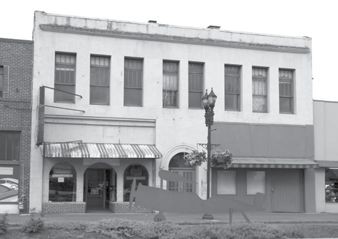5432-34 South Tacoma Way (1901)
Introduction
Text-to-speech Audio
The building at 5432-34 South Tacoma Way has a diverse occupant history, and often times several businesses occupied the structure concurrently. The Fabian Sauriol Hay and Feed store occupied this address from 1901 until 1905. The Sauriol family lived at this location as well and continued to live here after the hay and feed store was closed. By 1910 the Sauriol family operated a furniture business out of this location and no longer lived in the building.
Images
5432-34 South Tacoma Way (2011)

Backstory and Context
Text-to-speech Audio
Fabian Sauriol was a pioneer of South Tacoma and moved to Tacoma in 1881 from Oregon. He had four sons, William, Charles, Alphonso, and George, and two daughters, Cora and Alice. Fabian Sauriol died in 1918. A number of movie theatres have utilized this building. The Star Moving Picture Theatre operated from this location during 1909. From 1910 to 1913 the Idle Hour Theatre operated out of this building. Both the Star and the Idle Hour were silent movie theatres. The Idle Hour theatre was operated by Radnor Pratsch, a significant businessman who owned several movie theatres in South Tacoma. In 1913, the Idle Hour moved to 5411 South Union Avenue (South Tacoma Way) and the Orpheum Theatre moves into this location. The Orpheum Theatre was run by Fabian Sauriol’s son, George Sauriol, and was operational until 1929. Confectioner Emma Pratt, also operated her sugary sweets business from this location. In 1926, the building’s second level was transformed into an apartment complex, called Sauriol Apartments that lasted until 1979. From 1926 until 1930, space below accommodated a number of businesses, including the Louis Kinrod Variety Store, the South Tacoma Decorating Company, Aubry Electric Shop, and Lloyd West Sign Painting. In 1932, the Cut Rate Store offered men’s furnishings. From 1933 small businesses such as Ole Westrum Meats, G. Allen Averill Grocery, Margaret Boehme Dairy Products and Sauriol’s Cute Rate Drug Store appeared. Although the storefronts have been significantly altered over the years, the basic rhythm of two street-level businesses divided by an entry door for the second level remains. These business storefronts would have followed the same pattern of recessed entries with transoms above that was typical in the late 19th and early 20th century
Sources
Historic South Tacoma Way. Tacoma, WA. Historic Tacoma Press, 2011.
Image from 2011, photo courtesy of Kingstree Studios
